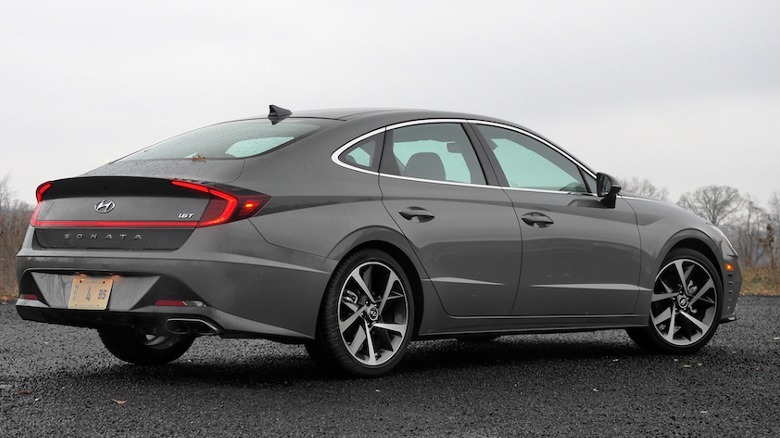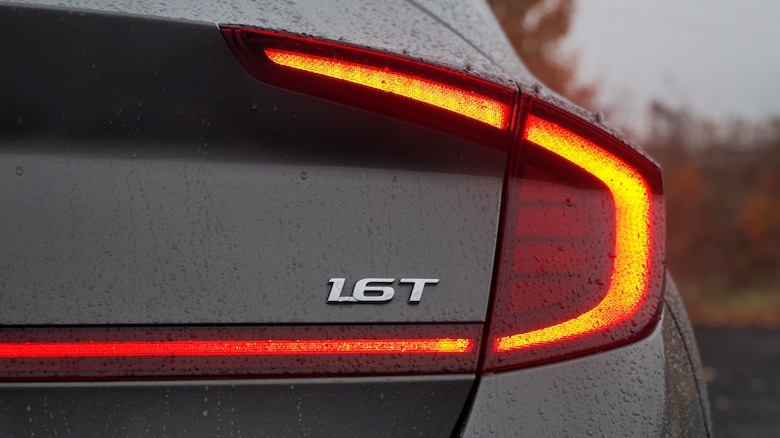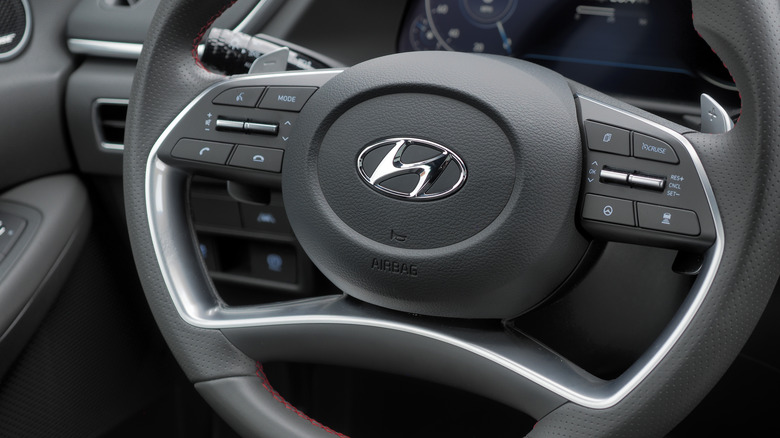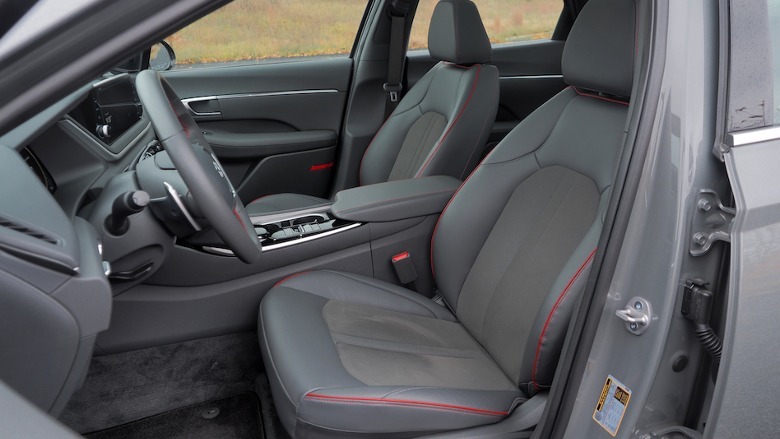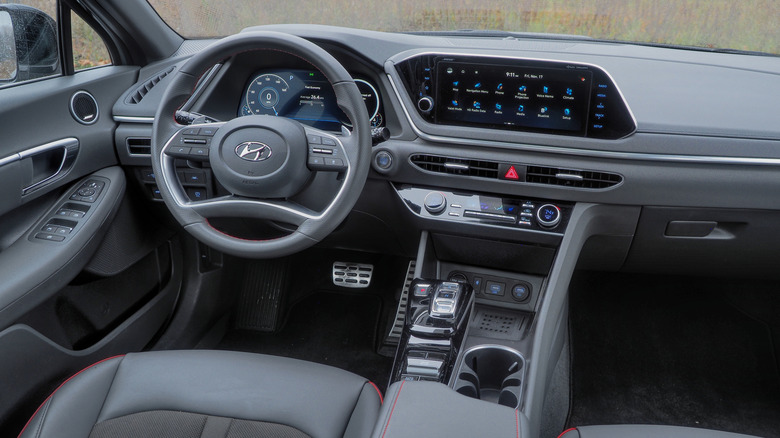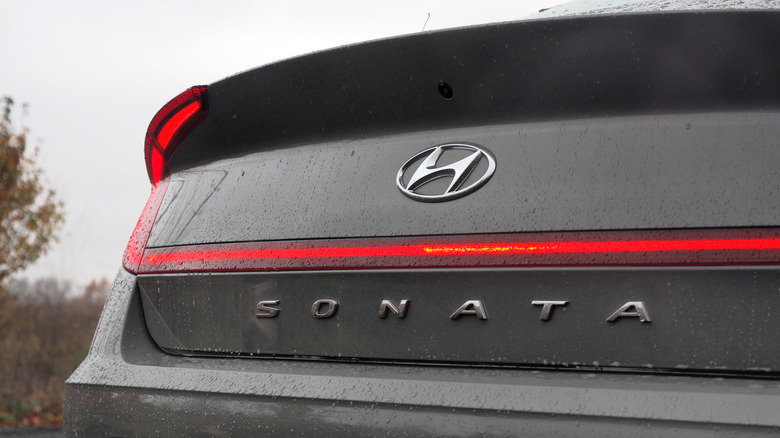2023 Hyundai Sonata Review: More Than Affordability Makes This Sedan Shine
- Affordable and well-equipped
- Optional 1.6L Turbo engine is eager
- High level of standard active safety tech
- Styling is memorable, but 2024 update looks much better
- Base engine lacks pep
- Not quite as frugal in practice as the official numbers
The modern sedan isn't dead, you just need to offer something special in order to wrest attention away from crossovers and SUVs. For Hyundai, the winning formula has turned out to be low prices and high equipment levels. While that might sound obvious, it's a combination that's not easy to deliver in practice. Not if you also want a car that's actually engaging to drive, that is.
Making the 2023 Hyundai Sonata compelling, then, involves more than just raiding a shared parts bin and undercutting the sticker on rivals from Honda, Toyota, and others. Value may be subjective, but even buyers on a budget expect thoughtful design and an experience that lives up to the "fresh off the lot" promise.
Rather than look at Hyundai's most expensive Sonata, then, or its most powerful, here the focus is the midpoint of the line-up. Not so lavish as to break the bank, but still offering features which — when you're faced with the order sheet — are tough to say no to.
A sad guppy, but not for much longer
The 2023 Sonata's aesthetic may not find favor in every quarter, with its sad guppy grille drooping deep into the front fascia. This SEL Plus trim car does bypass that a little with its blacked-out mesh and other exterior detailing, while the daytime running lights that stretch up into the hood strakes are a nice touch. All the same, the Cylon Centurion styling revamp for the 2024 Sonata may be worth waiting for if this current look isn't ticking your boxes.
Base trim cars get 16-inch alloy wheels that are upgraded to 17-inch version on the SEL while this SEL Plus swaps them out for handsome 19-inch rims. At the rear, Hyundai's blend of flat and curved surfacing is nicely emphasized by a curving light bar. The flat Portofino Gray paintwork is one of five similar shades Hyundai offers, with red and dark blue the only routes for something brighter.
Under the hood, though, is where the SEL Plus' advantage shows. Where the base Sonata gets a 2.5-liter four-cylinder gas engine to drive the front wheels, the SEL Plus swaps that for a 1.6-liter turbo-four.
More torque, but not the most horses
The naturally-aspirated engine has a little more horsepower — 191 hp, in fact, compared to 180 hp from the turbo engine — but it's the torque where the difference is most obvious. The 2.5-liter musters 181 lb-ft at 4,000 rpm: less twist and significantly later than the 195 lb-ft between 1,500 and 4,500 rpm that the 1.6-liter turbo offers.
It's noticeable from the get-go, with the turbo Sonata feeling positively perky and eager from a standing start. Hyundai's throttle mapping and the 8-speed automatic transmission deserve some credit here, too, but the net result overall is a pace that genuinely feels like more than you ought to expect from an engine this size and with these power numbers.
Get up to highway speed, meanwhile, and the power numbers start to feel more believable. Not that the Sonata feels woefully slow or particularly sluggish during overtaking maneuvers, but it's a reminder that you're not actually driving a sports sedan. Of course, Hyundai will happily sell you a Sonata N Line with a 290 horsepower 2.5-liter turbo if you actually want aggression on a budget.
A proper automatic transmission is welcome
I don't think most people need it, and you'll pay in economy too. The 1.6-liter turbo is rated for 27 mpg in the city, 37 mpg on the highway, and 31 mpg combined. In my own mixed driving — biased toward urban use, admittedly — I saw just over 26 mpg.
Hyundai's MacPherson strut front suspension with coil springs and multi-link rear suspension aren't set up for particularly enthusiastic driving. That's also probably for the best, and the Sonata feels refined and stable if never exactly hungry for tight corners. Again, you'll want a Sonata N Line for something along those lines.
A chunky drive mode toggle switches through Normal, Smart, Sport, and Custom settings, which predominantly affect things like throttle mapping and transmission behavior. Hyundai gets bonus points for using an actual automatic gearbox rather than a whiny CVT, too, and the Sonata's paddle shifters have an oddly rewarding action compared to the plasticky flaps so many (sometimes much more expensive) cars come equipped with.
A user-friendly dashboard
That surprisingly crisp feel continues through the rest of the cabin, for the most part. No, Hyundai's design here isn't as avant-garde as what you'll find in, say, an Ioniq 6. Nonetheless, it's sturdy and easy to use, with simple knobs and toggles for the HVAC system, oversized buttons for the transmission selector, and uncryptic controls on the steering wheel.
SEL Plus trim gets faux leather seating surfaces with microfiber inserts, along with 8-way power adjustment for the driver and 6-way power adjustment for the front passenger. Seat heating is standard, too, though not ventilation, and nor is a heated steering wheel; you'll need the top-spec Limited trim (from $35,325 plus destination) for both of those.
SEL trim and above replace the base Sonata's 8-inch infotainment touchscreen with a more spacious 10.25-inch example, with wired Android Auto and Apple CarPlay support. SEL Plus gets a 12-speaker Bose audio system plus a wireless phone charging pad. There's also a matching 12.3-inch cluster display, upgrading the 3.5-inch or 4.2-inch panel in the SE and SEL, respectively, plus Hyundai Digital Key and a panoramic sunroof.
Packed full of active safety tech
Certainly, those with a taste for the fanciest stuff should look to the Sonata Limited trim. That's where things like a 360-degree camera to help with parking, color head-up display, and leather seats with position memory for the driver and front passenger are included. For most people, though, I suspect the advantages over the SEL Plus aren't going to move the needle.
That's in part because Hyundai makes its SmartSense active safety suite standard across the board. All 2023 Sonata trims get forward collision-avoidance assist with pedestrian, cyclist, and junction-turning detection, along with lane keeping assist and lane following assist. Adaptive cruise control is standard, too, along with automatic high beams, blind spot collision-avoidance assist, and rear cross-traffic collision-avoidance assist.
Hyundai's capable Highway Driving Assist (HDA) isn't available until the N Line or Limited trims, and only the Limited trim gets Remote Smart Parking Assist (which allows you to move the Sonata forward or backward from a parking space from the key fob: a clever party trick, but not something I've ever found essential). Parking collision-avoidance assist is only standard on the Limited trim, too, as is a blind-spot view monitor which beams a live camera feed of the adjacent lane to the driver's instrument cluster when you hit the turn signal. Again, nifty, but not a must-have.
Hyundai's standard warranty is a healthy 5 years/60,000 miles of limited coverage, handily beating Honda and Toyota's 3 years/36,000 miles. The Sonata also gets 10 years/100,000 miles coverage for the powertrain and 5 years/unlimited miles of 24/7 roadside assistance.
2023 Hyundai Sonata Verdict
With 2023 Sonata pricing kicking off at an eminently reasonable $25,450 (plus destination) for the base SE trim, there's no arguing that Hyundai's sedan isn't affordable. What's more surprising, though, is how much personally — visually and from behind the wheel — it brings to the midsize sedan party. That has not been, to be blunt, the most exciting party to attend, historically.
It's also pretty obvious that this Sonata SEL Plus is the sweet spot of the line-up. Priced from $32,475 (plus destination), it gets a more rewarding engine under the hood and a more tech-savvy cabin too. Exterior styling changes — like the 19-inch alloy wheels — help visually distinguish it — while the 31 mpg combined fuel economy figure adds to the value.
Honda's latest Accord is arguably a more compelling all-rounder, but then again, it ought to be given you're paying several thousand dollars more. Toyota's incoming 2025 Camry is shaping up to be an unexpectedly stylish alternative, though pricing for the hybrid-only sedan won't be confirmed until next year. Meanwhile, Hyundai's blend of affordability and features makes an exceedingly strong case that more expensive rivals have been struggling to counter.

